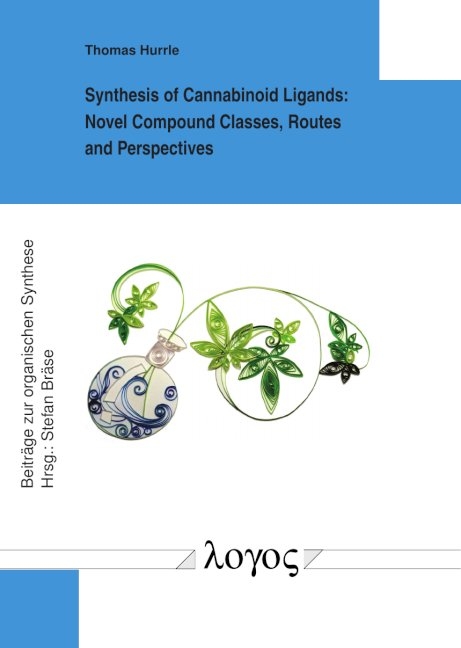
Synthesis of Cannabinoid Ligands
Novel Compound Classes, Routes and Perspectives
Seiten
2018
Logos Berlin (Verlag)
978-3-8325-4777-6 (ISBN)
Logos Berlin (Verlag)
978-3-8325-4777-6 (ISBN)
Since the discovery of the endocannabinoid system, cannabis and cannabinoids have received renewed attention. The elucidation of the biochemical machinery responsible for cannabinoid effects, has led to the identification of several targets that can be addressed by cannabinoid analogs. The most prominent targets are the cannabinoid receptors CB1 and CB2. The endocannabinoid system acts as a versatile regulating system found in mammals that is involved in a broad range of physiological and neuronal processes. Accordingly, cannabinoid ligands have been proposed for the treatment of a large number of diseases and symptoms, including cancer, multiple sclerosis and AIDS.
In the present thesis, several strategies to address the endocannabinoid system were pursued. Besides the synthesis of well over a hundred potentially active new compounds based on the lead structure of the potent cannabinoid analogs, 3-benzylcoumarins, a formal total synthesis of tetrahydrocannabinol (THC) via an DIELS-ALDER-reaction was concluded.
Additionally, some of the most potent compounds from preceding work have been encapsulated in micro- and nanoparticulate carrier systems. The particles were capable to release their cannabinoid payloads over hours, days, weeks and even months. The described microparticulate carrier systems should be able to generate site specific and long-term stable drug levels.
In the present thesis, several strategies to address the endocannabinoid system were pursued. Besides the synthesis of well over a hundred potentially active new compounds based on the lead structure of the potent cannabinoid analogs, 3-benzylcoumarins, a formal total synthesis of tetrahydrocannabinol (THC) via an DIELS-ALDER-reaction was concluded.
Additionally, some of the most potent compounds from preceding work have been encapsulated in micro- and nanoparticulate carrier systems. The particles were capable to release their cannabinoid payloads over hours, days, weeks and even months. The described microparticulate carrier systems should be able to generate site specific and long-term stable drug levels.
| Erscheinungsdatum | 01.10.2018 |
|---|---|
| Reihe/Serie | Beiträge zur organischen Synthese ; 73 |
| Sprache | englisch |
| Maße | 145 x 210 mm |
| Einbandart | Paperback |
| Themenwelt | Naturwissenschaften ► Chemie ► Organische Chemie |
| Schlagworte | Cannabinoids • Controlled release systems • Drug Delivery • Natural Product Synthesis • Organic Chemistry |
| ISBN-10 | 3-8325-4777-0 / 3832547770 |
| ISBN-13 | 978-3-8325-4777-6 / 9783832547776 |
| Zustand | Neuware |
| Haben Sie eine Frage zum Produkt? |
Mehr entdecken
aus dem Bereich
aus dem Bereich


